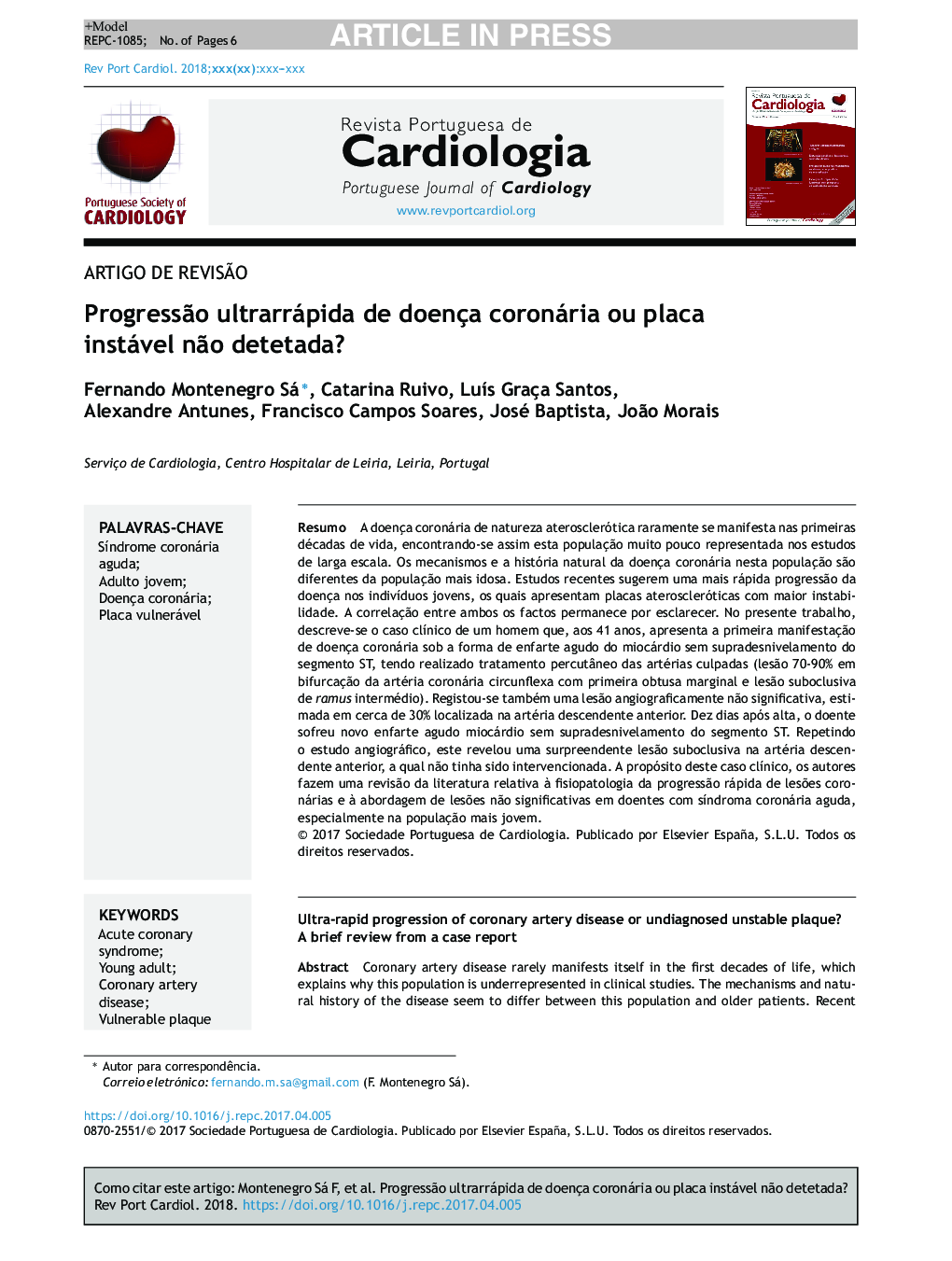| Article ID | Journal | Published Year | Pages | File Type |
|---|---|---|---|---|
| 7536091 | Revista Portuguesa de Cardiologia | 2018 | 6 Pages |
Abstract
Coronary artery disease rarely manifests itself in the first decades of life, which explains why this population is underrepresented in clinical studies. The mechanisms and natural history of the disease seem to differ between this population and older patients. Recent studies suggest a more rapid disease progression in youth, presenting more unstable atherosclerotic plaques, although this correlation has yet to be proven. In this paper, we present the case of a 41âyearâold man who presented with a nonâST elevation myocardial infarction, with percutaneous coronary intervention of the culprit lesion (70-90% lesion at bifurcation of the circumflex artery with the first marginal obtuse artery and a subâocclusive lesion of the ramus intermedius). There was also a nonâsignificant lesion (estimated at 30%) located in the left anterior descending coronary artery. Ten days after discharge, the patient suffered another nonâST elevation myocardial infarction. The coronary angiography revealed a surprising subâocclusive lesion of the left anterior descending coronary artery. Regarding this case, the authors reviewed the literature on the pathophysiology of rapidly progressive coronary artery disease and the approach for nonâsignificant lesions in patients with acute coronary syndrome, especially in the younger population.
Keywords
Related Topics
Health Sciences
Medicine and Dentistry
Cardiology and Cardiovascular Medicine
Authors
Fernando Montenegro Sá, Catarina Ruivo, LuÃs Graça Santos, Alexandre Antunes, Francisco Campos Soares, José Baptista, João Morais,
